Country Tanzania Mayor Dr Didas Massaburi | Area 1,590.5 km2 Population 1.361 million (1988) | |
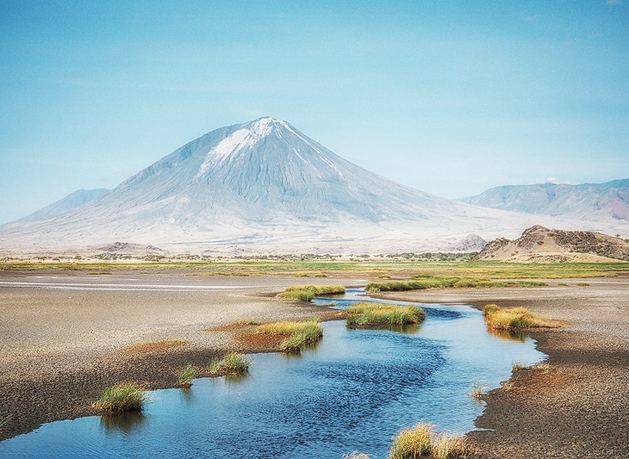 | ||
Points of interest Bongoyo Island, Mbudya Island, National Museum of Tanzania, Msasani Colleges and Universities University of Dar es Salaam (Dar es Salaam), Muhimbili University of Health and Allied Sciences (Ilala), Ardhi University (Dar es Salaam), The Open University of Tanzania (Dar es Salaam), International Medical and Technological University (Dar es Salaam) | ||
Map of Dar es Salaam
Dar es Salaam (from Arabic: دار السلام Dār as-Salām, "the place of peace"; formerly Mzizima) is the largest city in Tanzania and one of the largest cities in East Africa by population, as well as a regionally important economic centre. Located on the Indian Ocean coast, the city is one of the fastest growing in the world.
Contents
- Map of Dar es Salaam
- The best tanzanian food i have ever eaten at grace shop
- Gifted by nature dar es salaam city tanzania
- History
- Geography
- Population
- Economy and infrastructure
- Climate
- Government
- Local Public Transport
- Railway
- Airport
- Seaport
- Culture
- Food
- Music
- Tourism
- Art
- Sports
- Newspapers
- Internet access
- Globalization
- Education
- Universities
- Districts of Dar es Salaam Region
- Kinondoni
- Ilala
- Temeke
- Ubungo
- Kigamboni
- Notable people
- Twin towns sister cities
- References
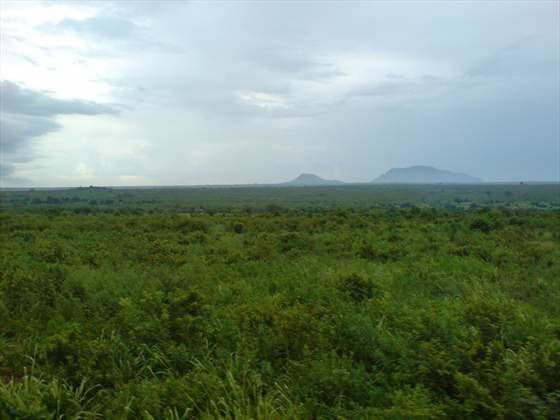
Until 1974, Dar es Salaam served as Tanzania’s capital city, at which point the capital city commenced transferring to Dodoma, which was officially completed in 1996. However, as of 2017, it continues to remain a focus of central government bureaucracy, although this is in the process of fully moving to Dodoma. In addition, it is Tanzania's most prominent city in arts, fashion, media, music, film and television and a leading financial centre, with the Dar es Salaam Stock Exchange (DSE) being the country's first and most important stock exchange market. The city is the leading arrival and departure point for most tourists who visit Tanzania, including the national parks for safaris and the islands of Unguja and Pemba. Dar es Salaam is also the largest and most populous Swahili-speaking city in the world.
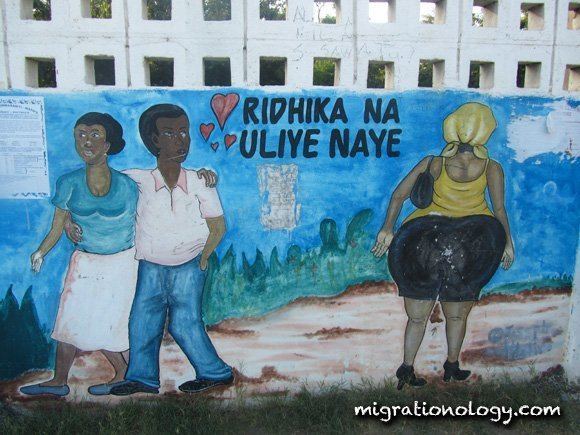
It is the capital of the coextensive Dar es Salaam Region administrative province, which is one of Tanzania's 31 administrative regions, and consists of five districts: Kinondoni in the north, Ilala in the centre, Ubungo, Temeke in the south and Kigamboni. The region had a population of 4,364,541 as of the official 2012 census.

The best tanzanian food i have ever eaten at grace shop
Gifted by nature dar es salaam city tanzania
History
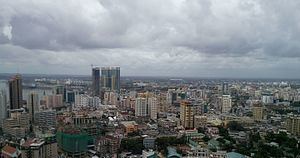
In the 19th century, Mzizima (Kiswahili for "healthy town") was a coastal fishing village on the periphery of Indian Ocean trade routes. In 1865 or 1866, Sultan Majid bin Said of Zanzibar began building a new city very close to Mzizima and named it Dar es Salaam. The name is commonly translated as "abode/home of peace", based on the Arabic dar ("house"), and the Arabic es salaam ("of peace"). Dar es Salaam fell into decline after Majid's death in 1870, but was revived in 1887 when the German East Africa Company established a station there. The town's growth was facilitated by its role as the administrative and commercial centre of German East Africa and industrial expansion resulting from the construction of the Central Railway Line in the early 1900s.
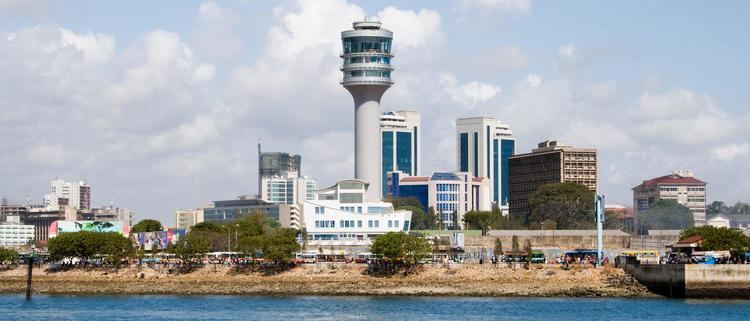
German East Africa was captured by the British during World War I and became Tanganyika, with Dar es Salaam the administrative and commercial centre. Under British indirect rule, separate European (e.g., Oyster Bay) and African (e.g., Kariakoo and Ilala) areas developed at a distance from the city centre. The city's population also included a large number of south Asians. After World War II, Dar es Salaam experienced a period of rapid growth.
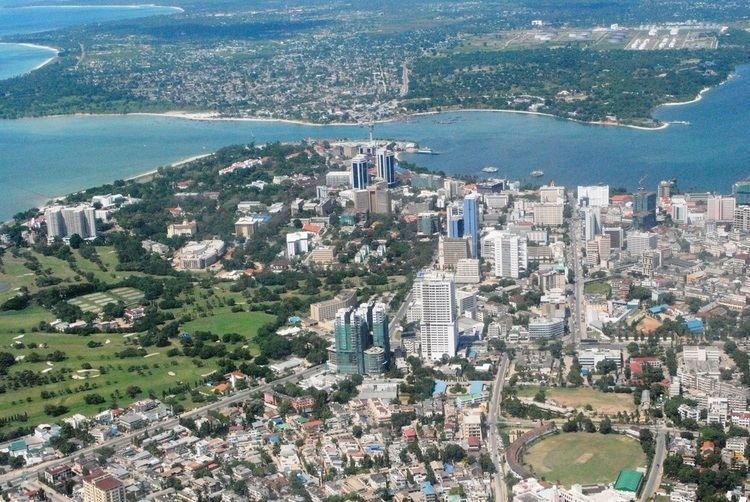
Political developments, including the formation and growth of the Tanganyika African National Union, led to Tanganyika attaining independence from colonial rule in December 1961. Dar es Salaam continued to serve as its capital, even when in 1964 Tanganyika and Zanzibar merged to form Tanzania. In 1973, however, provisions were made to relocate the capital to Dodoma, a more centrally located city in the interior. The relocation process has not yet been completed, and Dar es Salaam remains Tanzania's primary city.
In 1967, the Tanzanian government declared the Ujamaa policy, that set Tanzania into a socialist path. The move slowed down the potential growth of the city as the government encouraged people not to move in cities but stay in Ujamaa socialist villages. But by 1980's the Ujamaa policy proved to be a failure into combating increasing poverty, hunger, and delayed development that Tanzania faced. This led to the 1980s liberalization policy that virtually ended socialism and its spirit within the Tanzania's government. The move led to increasing migration of rural dwellers from rural areas into cities with Dar es Salaam becoming the leading city in receiving migrants from rural areas.
Until the late 1990s, Dar es Salaam was not put into the same category as Africa's leading cities like Nairobi, Johannesburg, Lagos, or Addis Ababa. But the 2000s decade became the turning point as the city experienced one of Africa's fastest urbanization rates as businesses were opened and prospered, Tanzanian banks headquartered in the city started to run more proper, the Dar es Salaam Stock Exchange expanded, and the Dar es Salaam harbour proved to be the most important in Tanzania and prominent for entrepot trade with landlocked countries like the Democratic Republic of Congo, Rwanda, Burundi, and Zambia. The CBD skyline hosts tall buildings, among them the 35-floor PSPF Tower, finished in 2015, and the Tanzania Ports Authority (TPA) Tower, currently under construction .
Geography
Dar es Salaam is located at 6°48' South, 39°17' East (−6.8000, 39.2833), on a natural harbour on the eastern coast of Africa, with sandy beaches in some areas.
The region of Dar es Salaam is divied in five districts.
Population
Dar es Salaam is the largest city in Tanzania. With a population increase of 5.6 percent per year from 2002 to 2012, the city is the third fastest growing in Africa (ninth fastest in the world), after Bamako and Lagos. The metro population is expected to reach 5.12 million by 2020 and predicted to be as high as 76 million by the year 2100, making Dar Es Salaam the second largest city on earth (after Lagos), by 2100.
According to the 2012 national census, the region had a population of 4,364,541, which was much higher than the pre-census projection of 3,270,255. For 2002–2012, the region's 5.6 percent average annual population growth rate was the highest in the country. It was also the most densely populated region with 3,133 people per square kilometer.
Economy and infrastructure
Dar es Salaam is Tanzania's most important city for both business and government. The city contains high concentrations of trade and other services and manufacturing compared to other parts of Tanzania, which has about 80 percent of its population in rural areas. Downtown includes small businesses, many of which are run by traders and proprietors whose families originated from the Middle East and Indian sub-continent—areas of the world with which the settlements of the Tanzanian coast have had long-standing trading relations.
The Dar es Salaam CBD made up of Kisutu, Kivukoni, Upanga and Kariakoo areas is Tanzania's largest city CBD. All three areas making up the downtown are found in the Ilala district. Kivukoni has the city's important fish market, the Magogoni fish market. Kivukoni also is the place where the Tanzania's central bank, The Bank of Tanzania is located, so is the Dar es Salaam Stock Exchange. Kisutu has businesses and offices and is the location of Dar es Salaam central railway station, the PSPF Towers and the TPA tower. Kariakoo is the prominent shopping area with streets like Congo Street for clothing shops. Uhuru street is for computer and electronics, Msimbazi for mobile phones.
Dar es Salaam has a problem with slums. According to a United Nations estimate, 70 percent of the city's population lives in informal settlements. The poorer residents crowd into downtown areas or large slums, many without running water or basic services. The more wealthy live in beachside mansions in the city's northern districts.
On a natural harbour on the Indian Ocean, it is the hub of the Tanzanian transportation system as the main railways and several highways originate in or near the city.
Dar es Salaam has had a major construction boom. The PSPF Twin Towers with more than 35 stories is the tallest building in the city and the country. Dar es Salaam has major infrastructural problems, including an outdated transport system and occasional power rationing.
Climate
Due to close proximity to the equator and the warm Indian Ocean, the city experiences tropical climatic conditions, typified by hot and humid weather throughout much of the year. It has a tropical wet and dry climate (Köppen: Aw). Annual rainfall is approximately 1,100 mm (43 in), and in a normal year there are two rainy seasons: "the long rains" in April and May and "the short rains" in November and December.
Government
"In 1949 the town became a municipality...[with] four nominated town councillors who elected a mayor." "Until June 1996, Dar es Salaam was managed by the Dar es Salaam City Council...the highest policymaking body in the city." As of 2017 Paul Makonda serves as commissioner of Dar es Salaam Region.
Local Public Transport
The most common form of transport in Dar es Salaam are the public buses, called dala dala, which are often found at the major bus terminals of Makumbusho and Ubungo. Dala dalas are cheap and often overcrowded. They are operated by a driver and a conductor: the conductor collects the fare and signals the driver to leave. They tend to be overcrowded, with passengers sometimes hanging outside the door.Since the introduction of motorcycle transit business known as "Bodaboda", most of the people prefer this type of transportation which allows them to get into the city faster compared to the minibuses which face a lot of traffic. Dala dala minibuses are involved in many road accidents, accounting for a large percentage of the 4000+ yearly road deaths.
The government has been introducing a bus rapid transport or metro bus system under Dar es Salaam rapid transit ('mwendo kasi') flagship. The metro buses are managed by UDA (Usafiri Dar es Salaam). The bus rapid transit system Phase 1 is completed and already in operation by the Dar Rapid Transit Agency, a government-private sector entity, and began operation on 10 May 2016. It is branded as UDA-RT (Usafiri Dar-Es-Salaam Rapid Transit). The first section runs between Kimara in the northwest to Kivukoni on the northern headland of the harbour. Phase 1 was funded by the World Bank, African Development Bank and the Tanzanian government.
The Dar es Salaam commuter rail is an urban and suburban commuter rail network serving the commercial city of Dar es Salaam.
MV Kigamboni ferries are running between Kivukoni and Kigamboni in Dar es Salaam.
Further types of transport are motorcycles and Bajaj.
Railway
The city also hosts the head office of Tanzania Zambia Railways Authority (TAZARA) built in the late 1960s to early 1970s. Also it host the offices and infrastructures of the Central Railway Line (Operated by Tanzania Railways Authority, TRL) both railways are used to commute within the city during the day to ease traffic congestion in the already overcrowded roads. Tanzania Railways operates the Central Line from Dar es Salaam to Kigoma. The TAZARA Railway connects Dar es Salaam to Zambia.
Airport
The Julius Nyerere International Airport is the principal airport serving the country with two operating terminals and one under construction; Terminal Three at Kipawa in Ilala Municipality.
Seaport
The city has the country's busiest port: The Port of Dar es Salaam handles 90% of the country's cargo. Due to huge influx of cargo and the slow pace of expansion a new cargo port 60 kilometres (37 miles) north of Dar es Salaam is proposed at Bagamoyo.
Culture
Dar es Salaam has heavy traffic during the daytime, but after sunset the area is relatively quiet as much of the city's nightlife is located in more residential districts away from the city's mainly commercial centre.
The sprawling suburbs furthest from the city centre are generally populated by Tanzanians of African descent, with the exception of Oyster Bay, where there is a large population of foreign expatriates. The edges of Dar es Salaam are spreading rapidly, severely taxing the transportation network (which aside from ferries, lacks any kind of mass transit facilities) and raising the prospect of future urban overcrowding.
Food
Due in part to the growth of the expatriate community and the increasing importance of tourism, the number of international restaurants has risen rapidly. The city offers a diversity of cuisine, ranging from traditional Tanzanian Barbecue-style options, such as Nyama Choma (Roasted meat—served with rice or ugali) and Mishkaki (Shish kebab—usually barbecued and served with salt, hot chili peppers, chapati, fries, and rice on the side), as well as the long-established traditional Indian and Zanzibari cuisine, to options from all corners of the globe, including Arab, Chinese, Thai, Turkish, Italian, and Japanese food. People who prefer neither fast food nor traditional restaurants buy their food from street vendors, who usually sell food at low prices. Samosas (sambusas) are common street food items within the city, as the area is largely influenced by the foods brought from India.
Music
The music scene in Dar es Salaam is divided between several styles. The longest standing style is live dance music (muziki wa dansi) bands such as DDC Mlimani Park Orchestra and Malaika Musical Band as examples. Taarab which was traditionally strong in Zanzibar has also found a niche. However, it remains small compared both to dance music and "Bongo Flava", a broad category that represents the Tanzanian take on Hip Hop and R&B, which has quickly become the most popular locally produced music. Traditional music, which locally is used to refer to tribal music is still performed but typically only on family oriented occasions such as weddings. Recently there has been development of another music niche, a taste that is rising and to be prominent as BongoFlava known as Singeli with star singers such as Msaga Sumu and Man Fongo.
This rap scene is also present.
In the 1970s, the Ministry of National Youth Culture aimed to create a national culture, which stressed the importance of music. Dar es Salaam became the music center in Tanzania, with the local radio exposing new bands and dominating the music and cultural scene. With this ujamaa, or family, mentality governing culture and music a unified people’s culture was created, leading to the rise of hip hop music. Throughout the years, the radio in Dar es Salaam has played a major role in the dissemination of music because many people don’t have television and cassettes are used over CDs.
Tourism
Dar es Salaam has two of the five museums comprising the National Museum of Tanzania consortium, namely the National Museum proper and the Makumbusho Cultural Centre & Village Museum. The National Museum is dedicated to the history of Tanzania; most notably, it exhibits some of the bones of Paranthropus boisei that were among the findings of Louis Leakey at Olduvai. The Makumbusho Cultural Centre & Village Museum, located in the outskirts of the city on the road to Bagamoyo, showcases traditional huts from 16 different Tanzanian ethnic groups. There are also examples of traditional cultivations, and traditional music and dance shows are held daily. In 2016, there was a breakthrough discovery in Northern Tanzania by a scientist, from the University of Dar es Salaam, of footprints thought to be of a hominid that predates Homo sapiens.
Close to the National Museum are also the botanical gardens, with tropical plants and trees.
There are beaches on the Msasani peninsula north of Dar es Salaam and in Kigamboni to the south. Trips to the nearby islands of the Dar es Salaam Marine Reserve are a popular daytrip from the city and a spot for snorkeling, swimming and sunbathing. Bongoyo Island can be reached by boat from the Msasani Slipway.
Further leisure spots are Mlimani shopping mall.
Dar es Salaam boasts of luxury hotels and beaches, some of the major hotels include the Movenpick, Kempinski Kilimanjaro, Peacock, Whitesands and many more.
Art
Dar es Salaam (and specifically the area of Oyster Bay) is home to the Tingatinga painting style. The Tingatinga art is a form of oil painting that utilizes bright colors and hues found in nature which can be done in person. As a tourist, any thing or animal that you may have interest in, for example the Twiga (or Zebra) can be painted on a compressed-wood like canvas and can be used as a souvenir. Your name can also be customized on the wood as a wall hanging. The Nyumba ya sanaa ("House of Art") is a cultural centre, workshop and shop dedicated to Tanzanian art, showcasing and promoting Tanzanian craftmanship. Prominent Tanzanian sculptor George Lilanga has donated some of his works to the centre, including decorations of the building's main entrance.
Sports
The National Stadium hosts Dar es Salaam's Young Africans Football Club, Simba Sports Club, Azam F.C. and other Tanzanian football clubs, and international matches. There is a proposal to build a new stadium in Dodoma, much bigger in capacity than the present one in Dar es salaam by the government as a donation from the Moroccan Kingdom.
Dar es Salaam's Mama Africa school, founded in 2003, is known for training some of Africa's finest acrobats.
Newspapers
Dar has newspapers available, particularly from sellers prowling through stationary traffic at road intersections. English-language ones, with online presences, include The Citizen and The Guardian and the leading Kiswahili daily, Mwananchi.Business Times is the only financial and economic newspaper in town. It was established in 1988 and became the first ever private newspaper in Tanzania. Business Times also owns Majira, the Kiswahili leading newspaper in Tanzania.
Internet access
Installation of a trans-Indian Ocean backbone cable in 2009 has, in theory, made Internet access much more readily available in Dar in particular and in East Africa in general. However, roll-out to end-users is slow, partly because of spotty telephone line coverage, partly due to the substantial prices and long contracts demanded for purchase of bandwidth for small ISPs. Mobile-telephone access to the Internet via 3G and 3.75G is still relatively expensive. 4G is making its way through major cities and towns as of 2015 with plans to go countrywide in the advanced planning stages.
Internet cafés are found in the city centre and free wifi hotspots in various government and non government institutions as well as public transport.
The expressed aim of the SEACOM cable is to enable East Africa to develop economically through increased online trading.
Globalization
Dar es Salaam is the city in Tanzania to which villagers flock for better opportunities. Westerners and Asians are also settling in Dar es Salaam, and the surge of foreigners has put pressure on local officials to develop policies better accommodating the growing diverse population of the city and its suburbs.
Education
Dar es Salaam is the educational centre of Tanzania. The city is home to educational institutions.
Universities
Districts of Dar es Salaam Region
Dar es Salaam Region is divided into five administrative districts. All five are governed as municipal councils, and so all of the city's suburbs or wards are affiliated with them. The regional commissioner is Paul Makonda.
Kinondoni
Kinondoni is the most populated amongst the districts, with half of the city's population residing within it. It is also home to high-income suburbs. These include:
Ilala
Ilala is the administrative district of Dar es Salaam where almost all government offices and ministries are housed. The Central Business District (locally called "Posta") is located in this district. It is the transportation hub of the city, as the Julius Nyerere International Airport, Central Railway Station and Tazara Railway Station are all within the district boundaries. The residential areas are mainly middle to high-income, and some of these are:
Temeke
Temeke is the industrial district of the city, where the manufacturing centers (heavy and light industry) are located. The Port of Dar es Salaam, which is the largest in the country, is found here. Temeke is believed to have the largest concentration of low-income residents due to industry. Port officials, military and police officers live there.
Ubungo
The Ubungo terminal is one of the main for the city and serves as a transportation link to most large Dar es salaam urban nodes. The Dar es Salaam commuter rail goes from here to the city centre but it is not fast(narrow gauge) and there are ten level crossings of roads along the route. Its also a hub of industry.
Kigamboni
Sports
Dar es Salaam is the sports center of Tanzania. Dar es Salaam hosts the second largest stadium in East and Central Africa (National Stadium), which can accommodate up to 60,000 people. The city is home of soccer clubs, the Azam FC, Simba Sports Club (Simba) and Young Africans Sports Club (Yanga) and other teams.
Apart from the National Stadium, Dar es salaam is home to the Uhuru Stadium (used mainly for local tournaments and political gatherings), Karume Memorial Stadium (the home of Tanzania Football Federation (TFF)), the Gymkhana Golf Courses (between the city center and the shores of the Indian Ocean), and also has tennis courts, squash courts, and a Fitness club. Outside the metropolitan districts, there is the Lugalo Military Golf Course (located in the Lugalo Military Barracks).
Notable people
Twin towns — sister cities
Dar es Salaam is twinned with:
